Monday Evening at the Cathedral
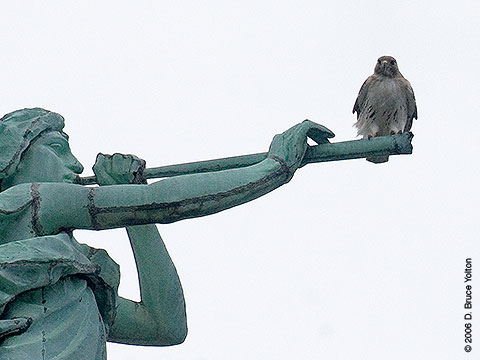
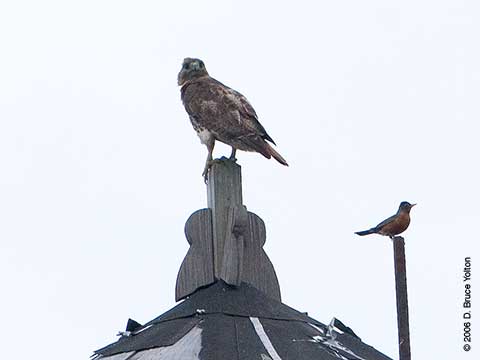
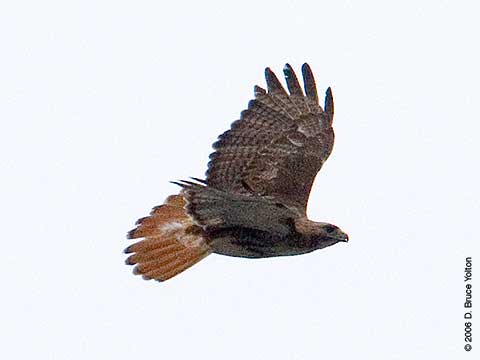
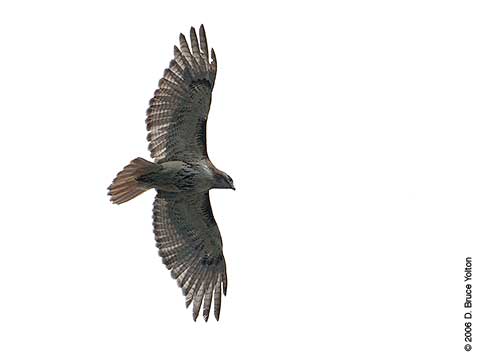
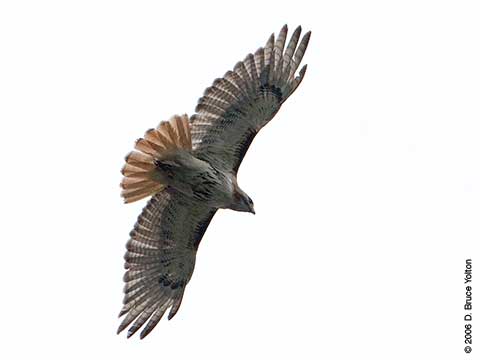
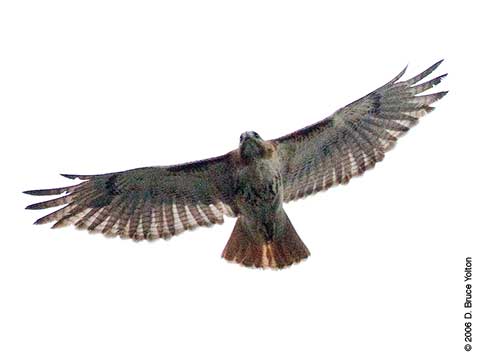
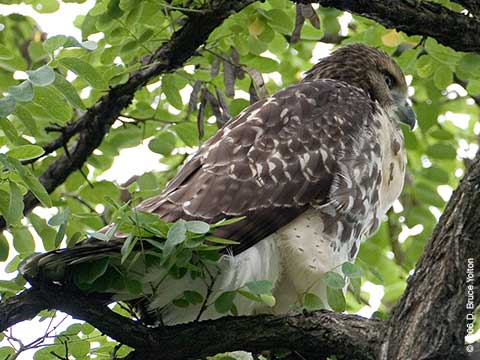
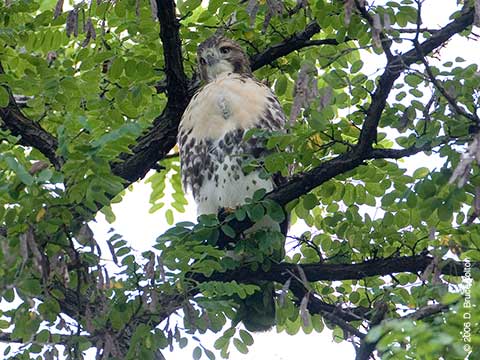








Kara C. Donohue and Alfred M. Dufty, Jr. wrote an excellent paper about using size measurements and weight to determine sex in Red-tailed Hawks, Sex determination of Red-tailed Hawks (Buteo jamaicensis calurus) using DNA analysis and morphometrics, J Field Ornithology, Vol 77, Issue 1, pp. 74-79.
This paper shows how hard it is to tell a Red-tail’s sex. I would caution anyone who thinks they can quickly tell a Red-tails sex by simple observation to think twice before declaring the sexes of our two Cathedral fledglings.
Update: This note sparked a discussion between Donna Browne and John Blakeman about this year’s fledglings sexes on Donna’s blog, palemaleirregulars. My comments above were to start a discussion about the sex variations beyond just height. I think Donna and John are exploring this very well on her blog.
I went up to the Cathedral early Sunday afternoon during the break in the rain. I was able to find one hawk before a downpour occurred. The fledgling was on a chimney on the Cathedral School. After the rain started, the fledgling flew into the scaffolding on the southern section of the Cathedral School. I bet it was looking for a dry spot.


Summer Friday’s allowed me to get out of work early and go up to the Cathedral around 2 p.m. I was the only one hawk watching when I arrived, and looked high and low for the hawks. I searched the Cathedral exterior from Morningside Drive and 113th Street, the St. Luke’s building, the Cathedral grounds, and Morningside Park but came up empty.
I parked myself on a bench overlooking Morningside Park, hoping to at least see the parents fly over the park. I started drinking some iced tea, relaxing on a hot, humid summer day, and then looked up. I was pleasantly surprised to see both fledglings within 10 feet of each other. Finally, I could hawk watch from a bench!
The fledglings, who have become difficult to tell apart, stayed in the tree until the early evening when their father brought them a rodent for dinner.
When dinner arrived one of the fledglings, who I assume was the precocious first fledgling, went directly to the Cathedral to be fed. The other fledgling, who I assume is the second to fledge, still seems to be having troubles gaining altitude and took a sensible route. It went downhill (south) to cross the street and then worked its way up north.
As I was leaving, Fledgling I was eating the rodent, which looked to be a rat. It was then joined by its sibling, Fledgling II, who looked to have gotten a bite or two before Fledgling I mantled over the prey. Robert Schmunk reports that Fledgling II got second pickings later in the evening.



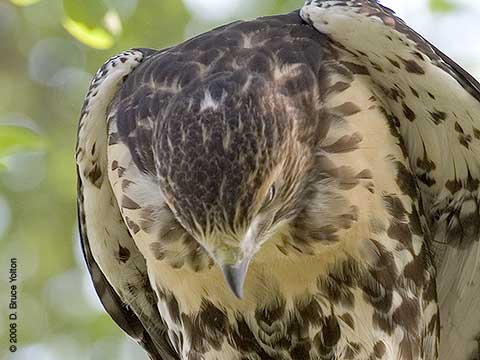






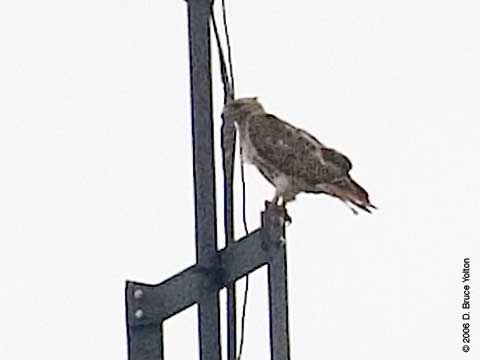
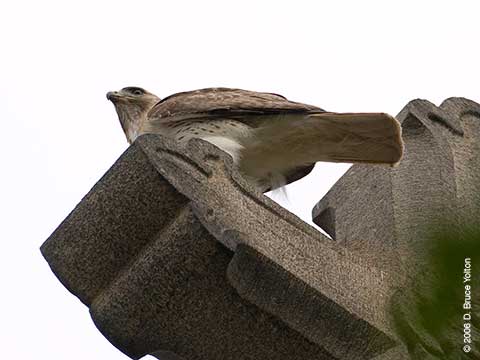
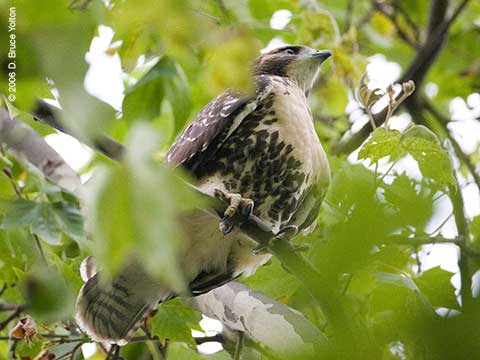
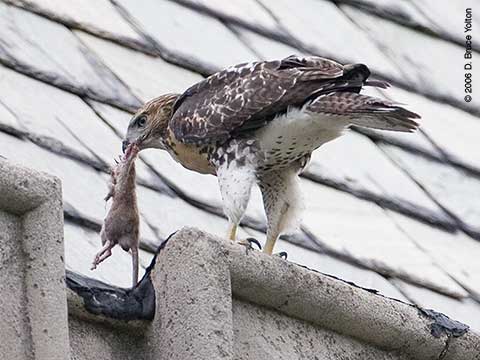
Up at the Cathedral this evening, we got to see both of the parents and at least one of the fledglings.
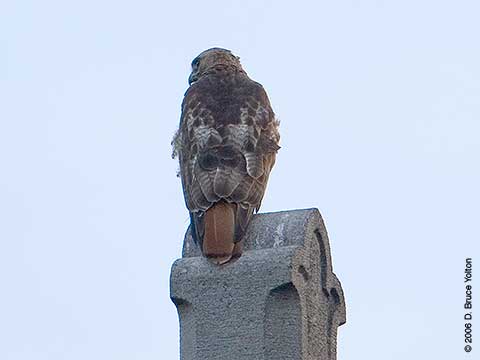
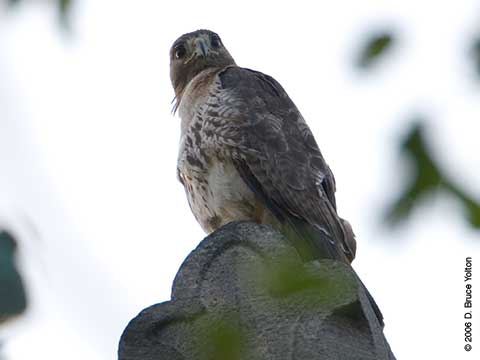
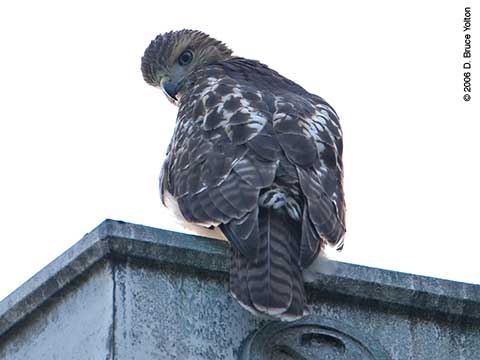
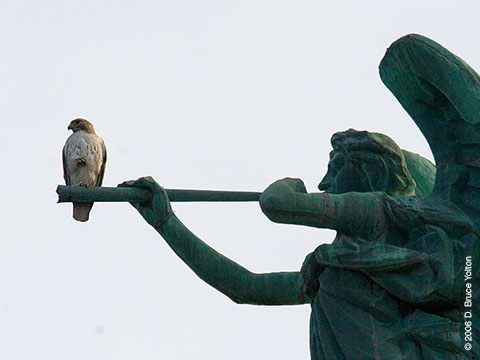
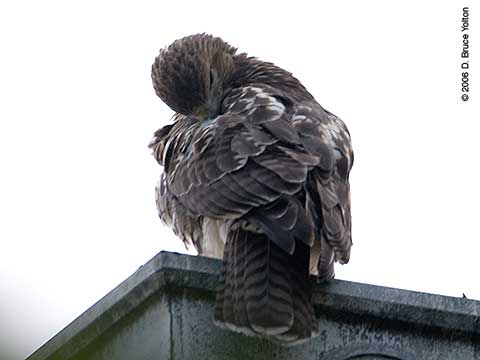
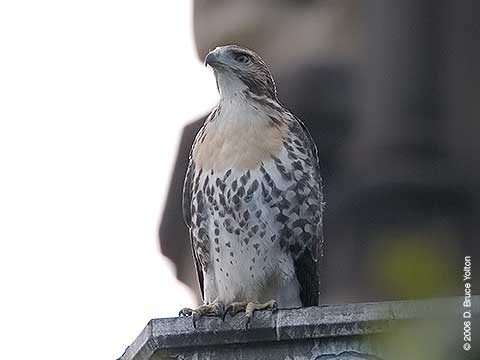
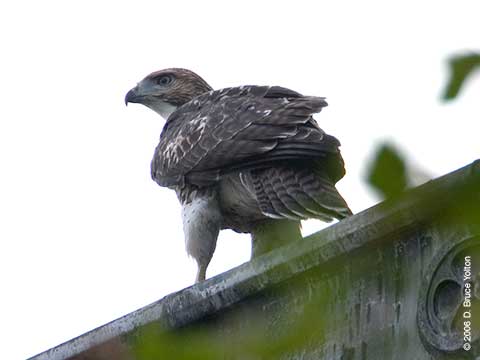
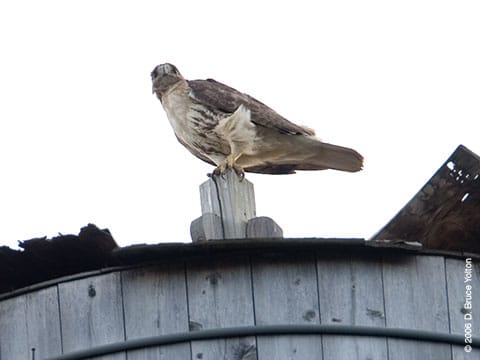
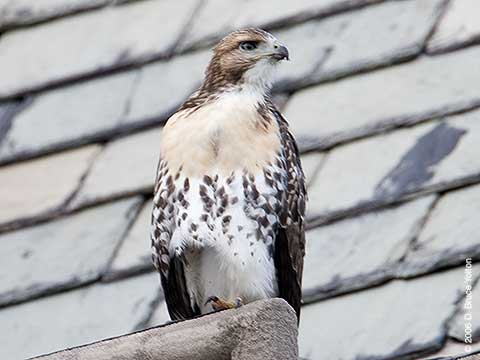
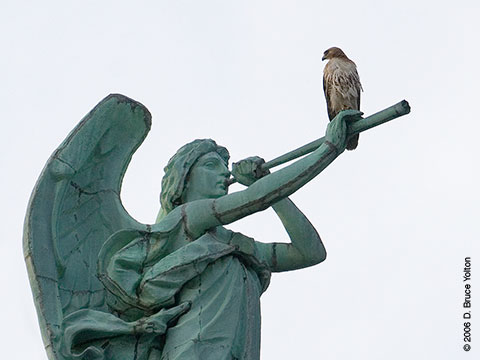
The two fledglings relaxed on a hot, 90 degree day. I was at the Cathedral in the early afternoon on Sunday. Fledgling I was sitting on a fifth floor windowsill of a St. Luke’s building half way between 113th and 114th Street on Morningside Drive.
Fledgling II was heard begging periodically, but took over an hour to find. It was in a tree on the south side of 113th about 20 feet in from Morningside Drive.
Both hawks looked to be doing nothing more than just trying to stay cool.
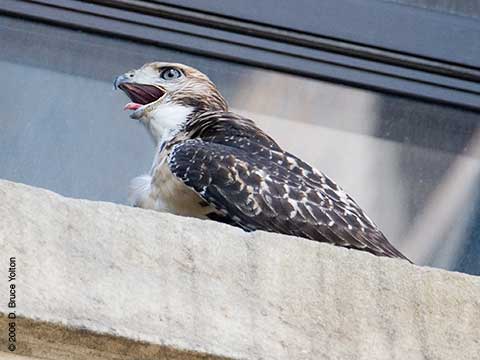
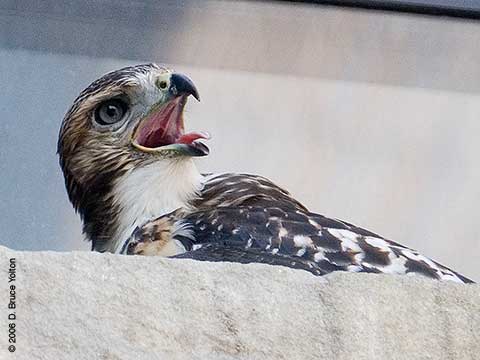
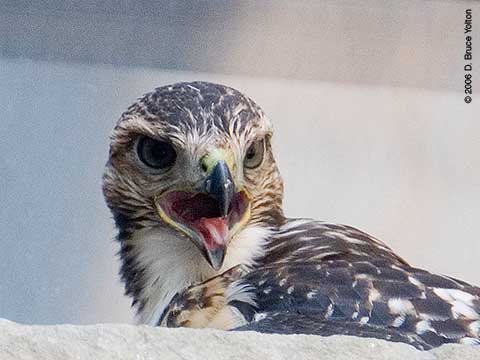
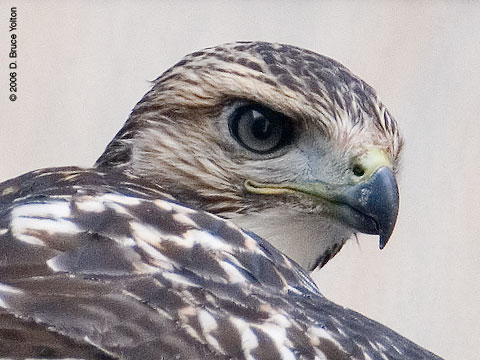
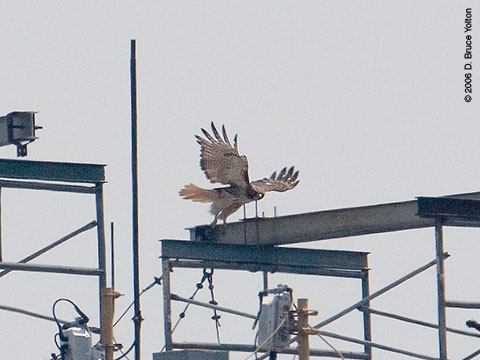
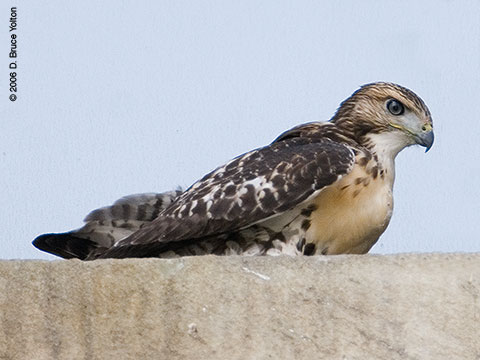
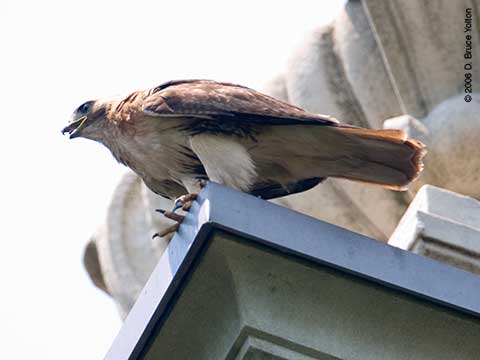
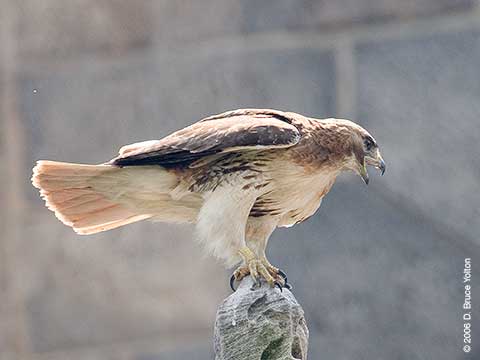
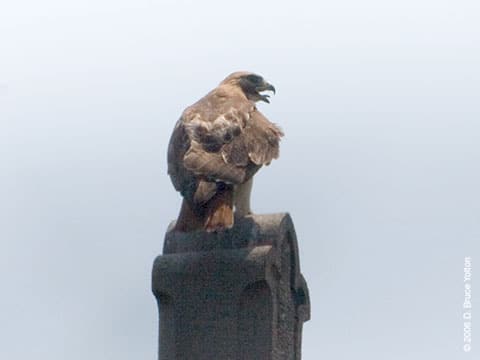
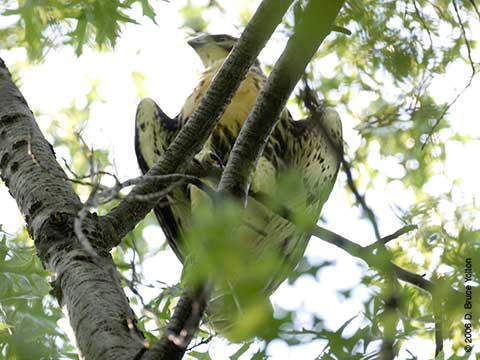
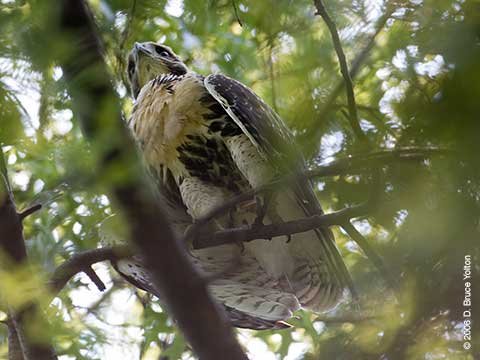
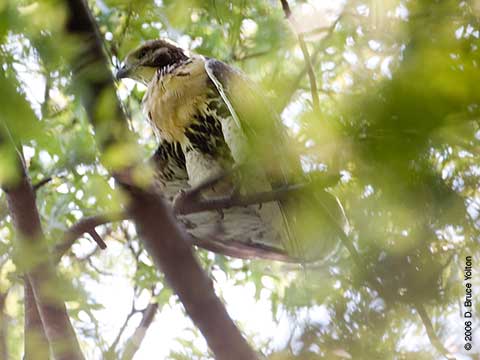
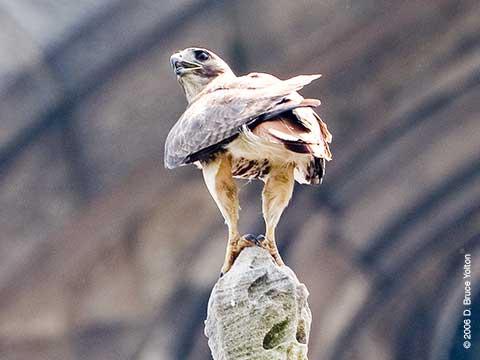
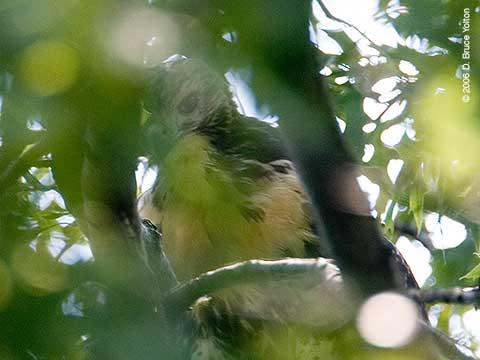
I hope you have enjoyed this series of posts about the St. John the Divine nest. It has been fun bringing a near daily report of the activities in Morningside Heights. Work commitments and vacations in June and July will prevent me from keeping up this daily pace. Expect to see posts only around the weekends for the next two months.